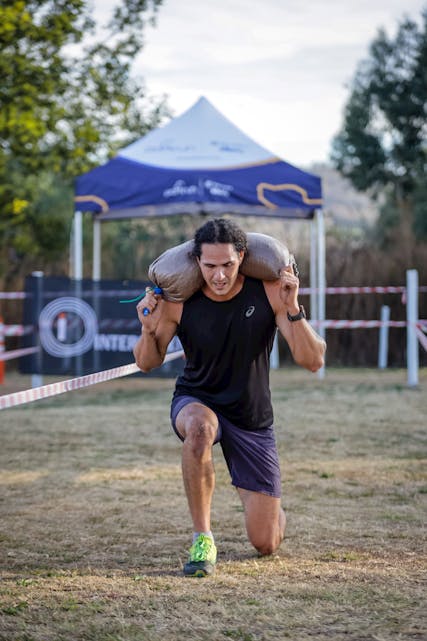
If you’re gearing up for a big hiking season, building stamina is essential for getting the most out of every trek. Whether you’re a beginner or a seasoned hiker aiming for longer, tougher hikes, preparing your body for the demands of the trail will help you go further and enjoy the journey more. In this post, we’ll cover practical ways to build stamina for hiking, even if you’re training in a flat area. Let’s dive in!
Understanding the Importance of Stamina in Hiking
Stamina is the foundation for tackling any hike, especially longer, more challenging ones. When you build endurance, you’re not just gaining the strength to handle extended distances—you’re enhancing your whole hiking experience. With good stamina, you can pace yourself steadily and avoid early burnout, allowing you to enjoy the journey without feeling completely wiped out by the halfway mark.
Endurance also plays a big role in keeping you safe. When you’re not physically fatigued, you’re more mentally alert and able to make better decisions, like staying aware of your surroundings, conserving water, and avoiding risky paths. Fatigue, on the other hand, can slow your reaction time and make you prone to slips or lapses in judgment.
Strength Training for Hiking
Building strength in key muscles—legs, core, glutes, hamstrings, and hip flexors—gives your body the support it needs to handle tough trails and longer distances. Stronger muscles also help distribute the weight of your backpack, making it easier on your body overall. Here is an exercise guide to help you.
To build hiking strength:
- Include exercises like squats, lunges, and deadlifts, which target your leg muscles and glutes.
- Don’t forget your core—planks, Russian twists, and leg raises all work well. A strong core improves balance and keeps you steady on uneven terrain.
- While more importance is placed on your legs and glutes, it’s important not to overlook your upperbody. Often when scrambling up a steep incline strong arms and shoulders help to push yourself up.
Endurance Building: Last Longer on the Trail
Hiking can be an all-day affair, and endurance is key for maintaining your energy mile after mile. Boosting endurance in your legs, core, shoulders, and lower back will help you sustain your energy, whether you’re tackling gentle hills or rugged mountains. Here’s how to build hiking endurance:
- Stair Climbing: If you have access to stairs or a stair climber, use it to simulate uphill hiking. This workout strengthens your leg and glute muscles, helping you take on slopes more easily.
- Incline Lunges: If you’re in a flat area, try walking lunges on a slight incline (like a driveway or trail slope). Start with a few minutes and add 2-3 minutes each session to build up endurance. For added challenge, wear a lightly loaded pack.
- Progressive Walk-Run Routines: Start with walking on flat terrain, then gradually mix in intervals of jogging or running. Build up to walking or running 10,000 steps or more per day.

Improve Balance for More Stability
Good balance will make you feel more confident and secure on uneven ground. To work on balance, try incorporating single-leg exercises, like single-leg squats or toe touches, into your training. Practicing balance regularly will give you a stable base and help reduce the risk of falls on the trail.
Cardio for Hiking Stamina
Cardio is a must for building stamina. Hiking is, after all, a cardio workout that gets your heart pumping! Regular cardio training will increase your lung capacity and heart health, making it easier to handle steep climbs and longer treks.
Here are some cardio options:
- Trail Running or Hiking: Both are perfect for conditioning and familiarizing yourself with uneven terrain.
- Cycling, Swimming, or Elliptical Machines: If you can’t get outdoors, these are excellent cardio alternatives that will still build hiking stamina.
- Dynamic Cardio Workouts: Think HIIT (High-Intensity Interval Training) or circuit workouts, which keep your heart rate up and work different muscle groups.
Essential Nutrients for Sustained Energy
Fueling your body properly is key to maintaining stamina on the trails. Start with complex carbs like whole grains, fruits, and vegetables, which provide a steady energy release instead of quick spikes and crashes. Include lean proteins like nuts, cheese, or jerky to keep muscles strong and reduce fatigue. Fats from sources like avocados and nut butters are also important because they offer long-lasting energy that won’t weigh you down.
Hydration is equally critical; dehydration can zap your energy fast. Aim to drink regularly throughout the hike, even before you feel thirsty. For longer treks, electrolyte drinks or snacks like trail mix with a touch of salt can help replace the minerals lost through sweat, keeping your energy levels stable and your body in top shape. For in depth detail here is my guide on hydration.
The Role of Proper Hiking Gear
Having the right gear can make a huge difference in how far you can go before fatigue sets in. First, footwear is essential—well-fitting, sturdy hiking boots or shoes give your feet the support they need over rugged terrain, helping prevent muscle strain and reducing the risk of blisters. Blisters and foot discomfort can cut a hike short, so investing in footwear that cushions and supports is worth it.
Other gear, like trekking poles, can help you distribute weight and ease pressure on your legs, especially uphill. A well-packed backpack that distributes weight evenly and contains only essentials can also reduce strain, keeping you comfortable longer on the trail. With the right gear, you’ll move more efficiently, conserving energy and building your stamina each time you hike.
Practice Deep Breathing
Breathing deeply is often overlooked, but it’s a powerful way to support endurance. Deep breathing delivers more oxygen to your muscles, reducing fatigue. Practice expanding your diaphragm by breathing deeply into your lower lungs. This will strengthen your breathing muscles, which is a big help when you’re hiking at higher elevations or over long distances.
Mindset and Mental Preparedness
Building stamina for hiking isn’t just about physical strength; your mindset plays a big role too. When you’re on a tough trail, mental toughness and focus can be just as important as your fitness. Staying positive and focused helps you push through difficult sections, keep a steady pace, and manage any discomfort along the way. By setting small goals for each leg of the hike or simply taking a moment to appreciate the scenery, you can boost your performance and keep your energy up. Training your mind to stay calm and resilient will make those challenging terrains feel a bit easier.
Listen to Your Body
Building stamina is all about pushing limits, but knowing when to pause is just as important. Pay attention to early signs of fatigue, like heavy legs, shallow breathing, or muscle tightness—these are signals your body’s had enough for now. Taking short breaks isn’t a setback; it actually helps you go further in the long run. Give yourself a few minutes to catch your breath, sip some water, and enjoy the view. Then, when you’re ready, you can get back to it feeling refreshed and strong.
Post Hike Recovery
An inportant aspect of building endurance is recovery and this is where stretching after your hike and before you jump into the car to go home comes into play. Gentle stretching after a hike can help to prevent stiffness and promote flexibility. Focus on your legs, hips, and lower back—areas that often take the most strain on the trail. Holding stretches for 20-30 seconds can help release tension in your muscles. My guide on post hike stretches is a must read.
Consult a Doctor or Trainer
Before jumping into a training plan, check in with your doctor or a certified trainer to ensure your routine matches your fitness level and any health conditions. This will help you safely build stamina for hiking without risking injury.
Final Thoughts
Building hiking stamina doesn’t have to mean spending all day on the trail. With the right combination of strength, endurance, balance, and cardio exercises, you can prepare your body to go the distance, even if you don’t have hills to train on. So start training now, and you’ll be ready for any trail that comes your way. Happy hiking!
If you have any experiences you would like to share or questions, please leave them here.

It’s fascinating how much hiking depends on your mindset and perseverance. I often wonder how experienced hikers train their mental stamina. Do they prepare mentally as much as they do physically? Or does mental preparation come naturally with experience? I’d love to hear your thoughts on this. Do you think mental preparation is as important as physical training? Or does one naturally follow the other?
Hi Ronald,
Thanks for the feedback. As hiking is something I absolutely love doing, I don’t find I really have to mentally prepare. I choose hikes that I’m capable of doing when I have gone on hikes that I know are more challenging I have been more mentally prepared by breaking big climbs down into achievable smaller sections. I tell myself it’s one step at a time. I have been in situations where we’ve been off track and scrambling over huge boulders that seemed impossible or really unsafe. I stopped calmed myself, back tracked and observed my options, finding a route that was much easier and safer. Sometimes re-assessing is needed.